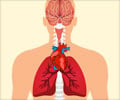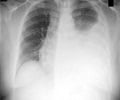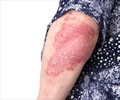A recent theory about tuberculosis, which claimed that TB bacteria have the ability to turn into dormant, armour-plated spores, has been ruled out by a new study.
A recent theory about tuberculosis, which claimed that TB bacteria have the ability to turn into dormant, armour-plated spores, has been ruled out by a new study.
If true, the findings would promise new avenues of research in the worldwide fight against TB.However, the new study by researchers at Loyola University Health System and other centers casts doubt on the TB spore theory.
Researchers were unable to detect spores in TB cultures and demonstrated that the TB bacterium doesn't even contain genes related to those needed to produce spores.
Researchers also failed to find any spores in frogs infected with TB bacteria, which would have been expected if TB bacteria produced spores in the course of infection.
The new findings could save TB researchers from pursuing strategies that likely would prove to be fruitless, said Loyola microbiologist Dr. Adam Driks, second author of the new study.
"Our study illustrates the essential contributions that basic science makes to translational and clinical research. It can help ensure that efforts to improve therapeutics and treatment are focused in the most productive directions," said Driks.
Advertisement
However, the new study casts doubts on this earlier finding. For example, the Swedish researchers reported that spore-related genes are present in the TB bacterium genome.
Advertisement
In the earlier study, researchers reported finding endospores in a culture of TB cells.
In the new study, researchers tried to replicate that experiment, but found no endospores in their culture of TB cells.
Driks said it appears that the endospores found in the earlier experiment might be the result of inadvertent contamination by other bacteria.
The results are published in the Proceedings of the National Academy of Sciences (PNAS).
Source-ANI
TRI














